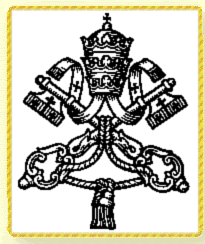From ANSA:
The hunt for Leonardo da Vinci's greatest lost fresco is back on.
Italian Culture Minister Francesco Rutelli has greenlighted a dig behind a 'secret' wall in Palazzo Vecchio that may hide the fresco of the Battle of Anghiari.
The search will be led by art sleuth Maurizio Seracini, the one real-life character in Dan Brown's bestselling thriller The Da Vinci Code, and the man who uncovered the wall two years ago. "The city council finally gave its approval and we rubber stamped the excavation and analysis," the minister said.
A panel of art experts will assess any findings, under the supervision of Florence's famed heritage restoration body Opificio dell Pietre Dure.Seracini claims the wall could hide "significant" traces of the fresco.
The panel will examine new evidence as well as poring through past studies and Florentine archives.The discovery of the wall in summer 2005 raised new hopes of finding this Holy Grail of the art world.
But opinion was divided.
The world's top Leonardo scholar, Carlo Pedretti, was convinced the fresco could be hiding inside the palazzo's Salone dei Cincequento.
"I really believe it's behind that wall," said Pedretti, director of the Armand Hammer Center for Leonardo Studies at the University of California.
He said Renaissance accounts showed "the fresco can only be there".Pedretti rejected suggestions that a later artist, Giorgio Vasari, might have damaged the fresco when he was told to cover it.
Vasari was asked to paint over masterworks by Giotto and Masaccio in two other Florentine sites, but left the underlying works intact, Pedretti noted.
"If he didn't damage them, why should he have done so with the Leonardo?" This optimism contrasted with the views of Florence art chief Antonio Paolucci who said after the wall find was unveiled that "there's little or nothing behind that wall".
Paolucci, a former culture minister, may now have changed his mind - since he was one of the officials who decided to set up the international panel.
The Battle of Anghiari - described by sculptor Benvenuto Cellini as a ground-breaking masterpiece that any artist simply had to see and study - has long been known from sketches and copies.
But the original was thought lost for ever - a victim of Leonardo's typically unorthodox decision to jettison the traditional technique of applying paint to wet plaster.
Leonardo needed time for his painstaking approach and so used oils directly on the dry plaster in Palazzo Vecchio, the symbol of Florentine civic pride.
Like the Last Supper in Milan it soon began to crumble, helped on its way by a thunderstorm that hit the unfinished building.
Leonardo gave up and headed for Milan.
Though it has been wiped off the art map, the fresco's birth was well documented.Leonardo (1452-1519) started painting it on June 6, 1505, surrounded by an admiring throng.








No comments:
Post a Comment